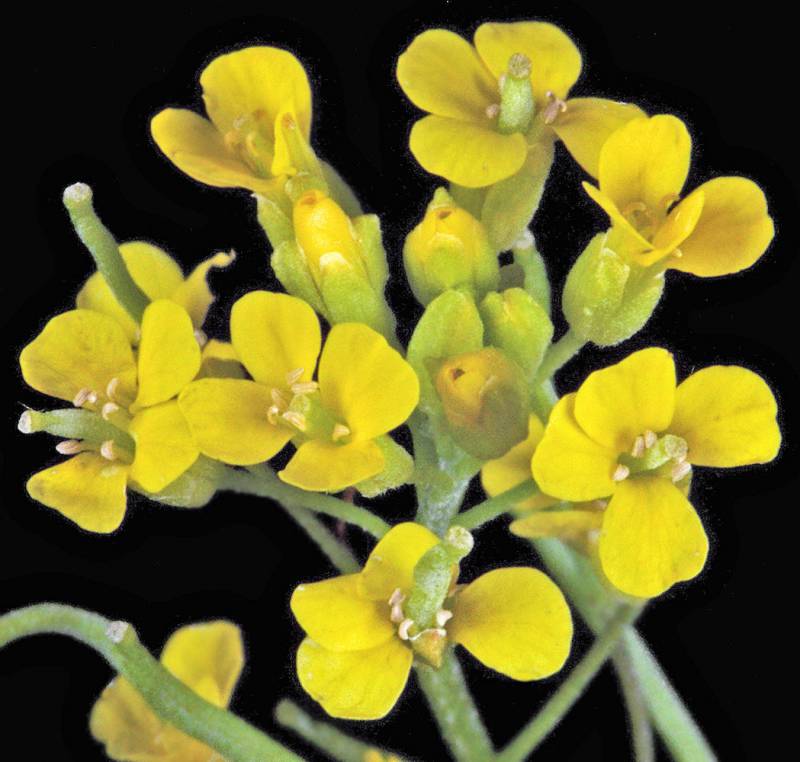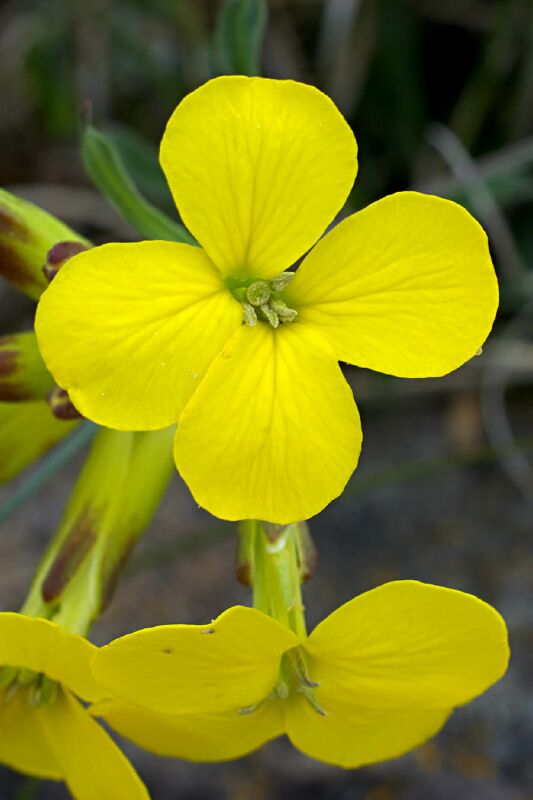Erysimum cheiranthoides
Erysimum arenicola
treacle mustard, wormseed wallflower
sand-dwelling wallflower
Basal leaves numerous in a rosette, linear-oblanceolate to oblanceolate, 2.5-6 cm. long and 1.5-8 mm. wide, entire to deeply wavy-dentate;
cauline leaves alternate, several, variable, reduced or larger than the basal, usually deeply wavy-dentate.
Flowers rather showy, in crowded, bractless racemes; pedicles slender, 3-10 mm. long, somewhat ascending;
sepals 4, erect, the outer pair somewhat saccate at the base;
petals 4, lemon yellow, the claw 10-15 mm. long, the blade obovate, 5-9 mm. long;
stamens 6;
style beaklike, 2-3.5 mm. long, stigma bi-lobed.
Siliques ascending to erect, flattened, lumpy, 3-12 cm. long and 2-2.5 mm. wide, the valves strongly nerved;
seeds in 1 series, wingless.
Erysimum cheiranthoides
Erysimum arenicola
- Local floras:
BC,
CA,
OR,
WA
- Local Web sites:
CalFlora,
CalPhotos,
Flora NW,
PNW Herbaria
WildflowerSearch
iNaturalist (observations)
USDA Plants Database
- LBJ Wildflower Center
- SEINet
- Plants of the World Online
- Encyclopedia of Life
- Wikipedia
- Google Image Search



